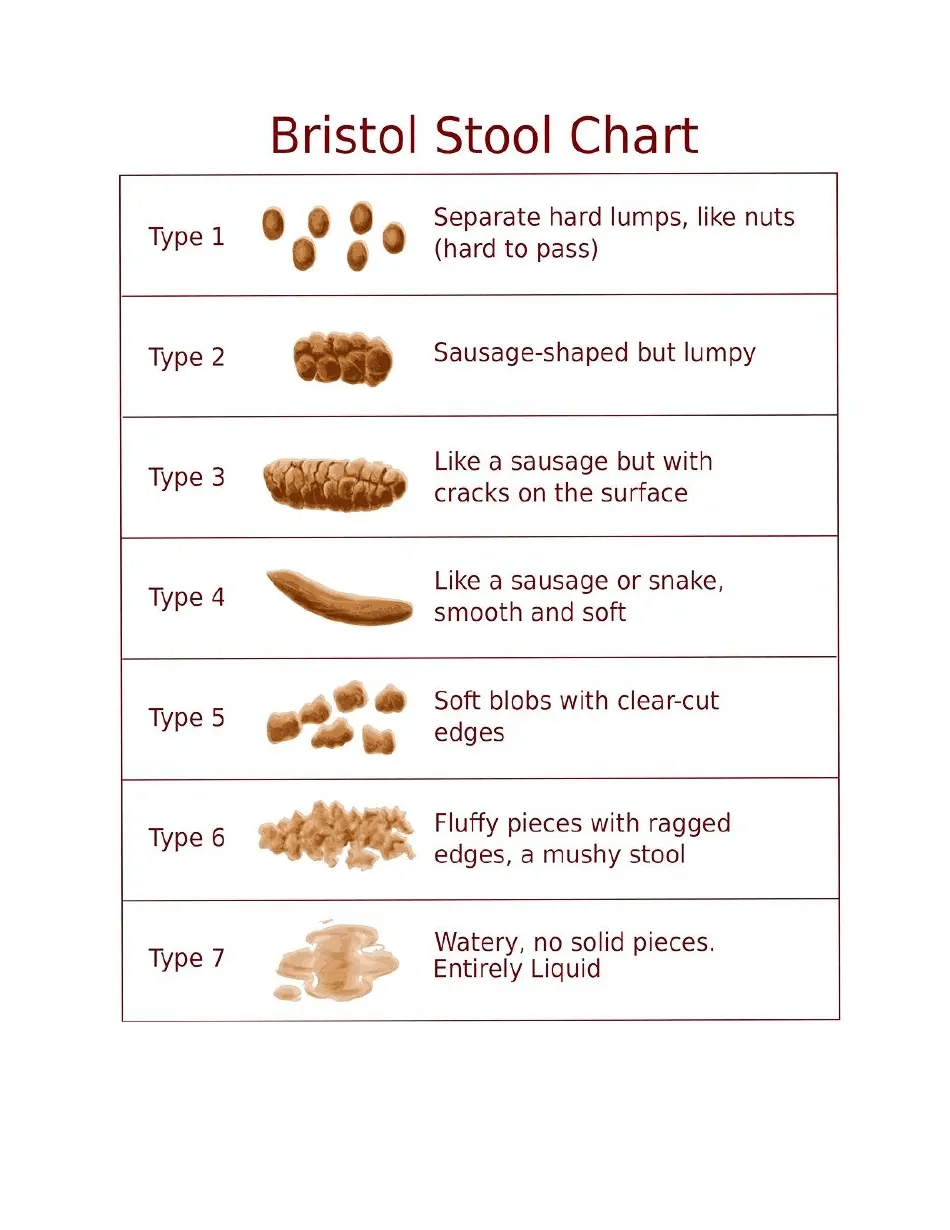The Food, Mood & Poop Journal
(FMPJ)
A Comprehensive Tracking tool for Digestive Health
Introducing the Food, Mood, Poop Journal: A Comprehensive Tracking Tool for Digestive Health
When it comes to managing and improving digestive health, understanding the relationship between what we eat and how we feel is crucial. The Food, Mood, Poop Journal is an innovative tool designed to help individuals make these connections clearer. This journal allows us to track our daily dietary intake, mood variations, and bowel movements, providing invaluable insights into how different foods impact overall health and well-being.
Welcome to a transformative approach to understanding and improving your gut health—the Food, Mood, Poop Journal (FMPJ). This comprehensive tool is designed to help you discover the intricate connections between what you eat, how you feel, and the quality of your bowel movements. By tracking these critical elements, the FMPJ provides personalized insights that empower you to make informed decisions about your diet and lifestyle, ultimately enhancing your overall well-being.
In functional wellness, we often emphasize the balance between various bodily systems. The FMPJ serves as a practical resource to help you apply this balance by observing and adjusting based on real-time feedback from your own body. Whether you're dealing with digestive discomfort, food sensitivities, or just aiming to optimize your health, this journal is your daily companion in the pursuit of a happier gut and a healthier life.
Poop Tracking
Find out what your stool has to say about your Health
Why Track Your Poop?
Understanding the nuances of your digestive health is a critical aspect of maintaining overall wellness, and tracking your poop offers direct insights into the functioning of your gut. While it may initially seem uncomfortable or trivial, the information derived from observing your bowel movements is invaluable for identifying potential health issues, optimizing your diet, and understanding how your body responds to various foods, stressors, and lifestyle changes. Here’s a deeper dive into why tracking your poop is an essential health practice:
Key Reasons to Track Your Poop
1. **Indicator of Gut Health**: Your stool is a direct reflection of the health of your digestive system. Changes in the consistency, frequency, and appearance of your bowel movements can signal disturbances in your gut flora, potential infections, or digestive disorders.
2. **Early Detection of Digestive Disorders**: Regular tracking can help catch early signs of conditions like irritable bowel syndrome (IBS), inflammatory bowel disease (IBD), and even colorectal cancer. Early detection is crucial for effective management and treatment.
3. **Impact of Diet on Digestion**: By monitoring changes in your stool, you can see how different foods affect your digestion. For example, an increase in fiber might change stool bulk and frequency, whereas dairy or gluten might cause discomfort or changes in stool consistency if you're intolerant.
4. **Absorption of Nutrients**: The appearance of undigested food in your stool can indicate malabsorption, suggesting that your body isn’t properly absorbing the nutrients from your food. This can be critical for addressing dietary needs or underlying conditions like celiac disease or pancreatic insufficiency.
5. **Hydration Status**: Your stool can also reflect your hydration status; hard, dry stools may suggest you need to drink more water, while very loose stools might indicate dehydration or other issues.
6. **Effectiveness of Probiotics or Medications**: If you're taking probiotics or certain medications, observing changes in your bowel habits can help determine if these interventions are effective.

What to Track
When tracking your poop, consider the following aspects for a comprehensive view:
- Frequency: Note how often you go. Deviations from your norm can be significant.
- Form and Consistency Use the Bristol Stool Chart as a guideline to classify the form of your stools.
- Color: Colors can indicate various health states. For example, black or red may suggest gastrointestinal bleeding, and very pale stools could indicate bile duct obstruction.
- Size and Amount: Changes in the size and amount can indicate variations in dietary intake or issues in digestive function.
- Odor: An unusually strong odor can sometimes indicate infections or complications.
- Presence of Blood or Mucus: This could be a sign of inflammation, infection, or colorectal cancer.
Introducing the Bristol Stool Chart
Enhancing Health Tracking with the Food, Mood, Poop Journal (FMPJ)
As part of our comprehensive approach to health monitoring through the Food, Mood, Poop Journal (FMPJ), we introduce an invaluable tool for evaluating digestive health: the Bristol Stool Chart. This chart is not just a clinical resource; it’s a practical guide that can help anyone become more attuned to their digestive health by providing a clear, visual method to categorize bowel movements.
What is the Bristol Stool Chart?
The Bristol Stool Chart is a diagnostic medical tool developed by Dr. Ken Heaton at the University of Bristol. It classifies human feces into seven categories, each of which provides information about different balance or imbalance states in the gut. The categories range from Type 1, which indicates severe constipation, to Type 7, which indicates diarrhea.
Types of Stool in the Bristol Stool Chart
- **Type 1**: Separate hard lumps, like nuts (hard to pass) - indicates severe constipation.
- **Type 2**: Sausage-shaped but lumpy - suggests slightly less severe constipation.
- **Type 3**: Like a sausage but with cracks on its surface - normal.
- **Type 4**: Like a sausage or snake, smooth and soft - optimal.
- **Type 5**: Soft blobs with clear-cut edges (easy to pass) - normal but tending towards diarrhea.
- **Type 6**: Fluffy pieces with ragged edges, a mushy stool - mild diarrhea.
- **Type 7**: Watery, no solid pieces, entirely liquid - severe diarrhea.
How the Bristol Stool Chart Enhances the FMPJ
Using the Bristol Stool Chart in conjunction with the FMPJ allows for precise tracking and analysis of bowel health. Here’s how it enhances the tracking process:
- **Clarity and Accuracy**: The chart provides a visual reference that helps you accurately describe your stool, which is crucial for identifying health trends or concerns.
- **Early Detection of Issues**: Regular tracking can help catch deviations from your normal stool type, which might indicate dietary issues or health problems needing attention.
- **Diet and Health Correlations**: By correlating changes in stool types with dietary intake or emotional states logged in the FMPJ, you can identify foods or stressors that affect your digestive health.
- **Communication with Healthcare Providers**: Accurate stool descriptions using the chart can help your healthcare provider make better-informed decisions, enhancing the care you receive.
How to Use the Bristol Stool Chart with the FMPJ
- **Daily Tracking**: Each day, record your stool type according to the Bristol Stool Chart in the FMPJ.
Introducing the Bristol Stool Chart
Enhancing Health Tracking with the Food, Mood, Poop Journal (FMPJ)
As part of our comprehensive approach to health monitoring through the Food, Mood, Poop Journal (FMPJ), we introduce an invaluable tool for evaluating digestive health: the Bristol Stool Chart. This chart is not just a clinical resource; it’s a practical guide that can help anyone become more attuned to their digestive health by providing a clear, visual method to categorize bowel movements.
What is the Bristol Stool Chart?
The Bristol Stool Chart is a diagnostic medical tool developed by Dr. Ken Heaton at the University of Bristol. It classifies human feces into seven categories, each of which provides information about different balance or imbalance states in the gut. The categories range from Type 1, which indicates severe constipation, to Type 7, which indicates diarrhea.
Types of Stool in the Bristol Stool Chart
- **Type 1**: Separate hard lumps, like nuts (hard to pass) - indicates severe constipation.
- **Type 2**: Sausage-shaped but lumpy - suggests slightly less severe constipation.
- **Type 3**: Like a sausage but with cracks on its surface - normal.
- **Type 4**: Like a sausage or snake, smooth and soft - optimal.
- **Type 5**: Soft blobs with clear-cut edges (easy to pass) - normal but tending towards diarrhea.
- **Type 6**: Fluffy pieces with ragged edges, a mushy stool - mild diarrhea.
- **Type 7**: Watery, no solid pieces, entirely liquid - severe diarrhea.
How the Bristol Stool Chart Enhances the FMPJ
Using the Bristol Stool Chart in conjunction with the FMPJ allows for precise tracking and analysis of bowel health. Here’s how it enhances the tracking process:
- **Clarity and Accuracy**: The chart provides a visual reference that helps you accurately describe your stool, which is crucial for identifying health trends or concerns.
- **Early Detection of Issues**: Regular tracking can help catch deviations from your normal stool type, which might indicate dietary issues or health problems needing attention.
- **Diet and Health Correlations**: By correlating changes in stool types with dietary intake or emotional states logged in the FMPJ, you can identify foods or stressors that affect your digestive health.
- **Communication with Healthcare Providers**: Accurate stool descriptions using the chart can help your healthcare provider make better-informed decisions, enhancing the care you receive.
How to Use the Bristol Stool Chart with the FMPJ
- **Daily Tracking**: Each day, record your stool type according to the Bristol Stool Chart in the FMPJ.
- **Note Variations**: Pay attention to any changes in stool type and note possible causes such as diet changes, stress levels, illness, or medication.
- **Review Patterns**: Regularly review your entries to identify any patterns or recurring issues that may require dietary adjustments or medical intervention.
### Conclusion
The Bristol Stool Chart is a simple yet powerful tool that complements the Food, Mood, Poop Journal by providing crucial insights into gut health. By incorporating this chart into your daily health tracking, you enhance your ability to monitor and respond to changes in your digestive system, leading to better health management and overall well-being. With this tool, you’re not just tracking your health; you’re taking an active step towards improving it.
Integrating Poop Tracking into Your Routine
To effectively integrate poop tracking into your health routine:
- **Maintain a Daily Log**: Consistency is key in tracking, so make it a part of your daily routine.
- **Review Patterns**: Regularly look back over your logs to identify any patterns or changes. Discuss these with a healthcare provider if anything unusual arises.
- **Combine with Other Health Data**: Link your poop tracking with food and mood logs to get a holistic view of your health influences and outcomes.
Tracking your poop provides critical insights that are vital for maintaining digestive health and, by extension, your overall well-being. By understanding the signals your body sends through bowel movements, you can make informed decisions about dietary choices, lifestyle changes, and medical care, leading to improved health outcomes and a better quality of life.
Getting the Most Out of Your Journal
To effectively use the Food, Mood, Poop Journal, commit to making regular entries and be as detailed as possible. Consistency is key to uncovering patterns and making the necessary adjustments to improve your health. Each week, take time to review your entries, note any trends, and consider how you might adapt your diet and lifestyle to foster better gut health.
This journal not only serves as a daily log but also as a guide to educate you on the importance of each tracked aspect and how they interrelate.
The Food, Mood, Poop Journal is an invaluable resource for anyone looking to enhance their digestive health, emotional well-being, and overall quality of life. By integrating this tool into your daily routine, you embark on a path of greater self-awareness and proactive health management, leading to a healthier, more balanced you
HOW TO TRACK YOUR MOOD EFFECTIVELY
Regular Entries: Aim to jot down your mood several times a day—perhaps in the morning, afternoon, and evening—to capture any fluctuations.
Be Detailed and Consistent: The more information you provide, the more useful your mood tracking will be. Consistency is key to identifying patterns over time.
Integrate with Food and Poop Tracking: Align your mood data with what you eat and your digestive health to see how they might influence your emotional state.
Use Tools and Apps: While a simple journal works, numerous apps can help track your mood, offering analytics and reminders to log your feelings.
Approach this with an open mind and without judgment. Each entry helps paint a more complete picture of your health, showing how interconnected our diets, digestion, and emotions truly are.
Mood tracking is more than just noting how you feel; it’s about understanding and managing the interplay between your mind and body. By incorporating mood tracking into your daily routine, you create a powerful tool for personal growth and health optimization, paving the way for a balanced and emotionally resilient life. Let’s move forward with curiosity and mindfulness, eager to discover how our bodies and minds respond to the world around us.
This page contains affiliate links. This means I may earn a commission should you choose to sign up for a program or make a purchase using my link.
Functional Diagnostic Nutrition® health coaches do not diagnose, treat, prevent, or cure any
disease or condition. Nothing we share with our clients is intended to substitute for the advice,
treatment or diagnosis of a qualified licensed physician. Functional Diagnostic Nutrition® (FDN)
Practitioners may not make any medical diagnoses or claim, nor substitute for your personal
physician’s care. It is the role of a Functional Diagnostic Nutrition® Practitioner to partner with
their clients to provide ongoing support and accountability in an opt-in model of self-care and
should be done under the supervision of a licensed physician.










